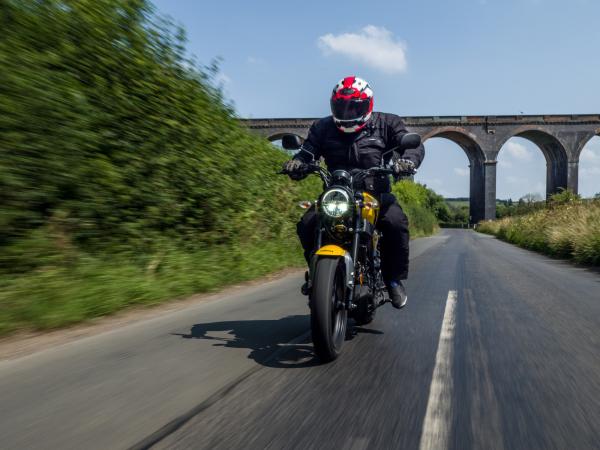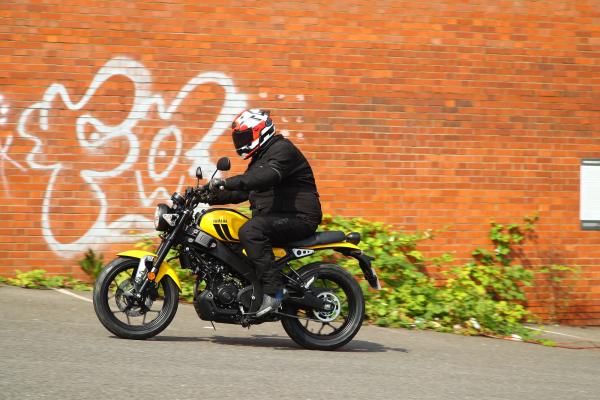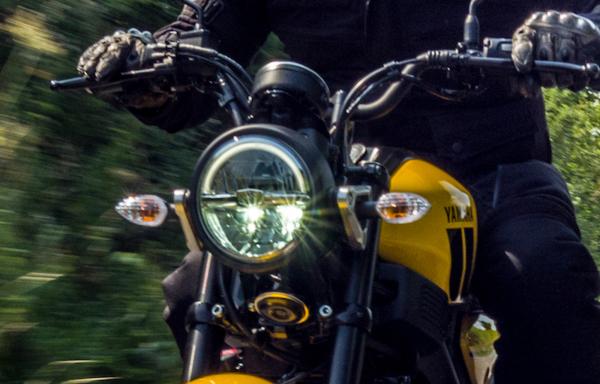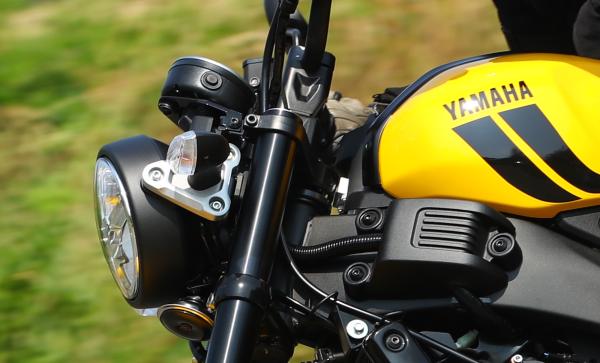Yamaha XSR 125 (2021) Road Test Review | Yamaha brings retro chic to entry level
The Yamaha XSR gets a new baby addition to its retro trendy model line with a brisk, good value and fun XSR 125 joining the XSR 700 and XSR 900

Member for
54 years 8 monthsRETROS ARE ‘en vogue’ and retros are cool, man (sorry, it’s what people said in the 1960s and 1970s.) And if you don’t think so, then take a gander at the June motorcycle sales figures.
Because there you will find that the likes of Royal Enfield’s Meteor 350 and Interceptor 650 seem to be doing rather well. The fact that they are attractively priced can only help too.
Of course Royal Enfield is quite old, 120 years old, to be precise. And – with Yamaha celebrating its 65th anniversary last year – the Japanese firm has its own history to be proud of. Some of this is represented in their Sport Heritage range which is ‘inspired by the past, built for the future’.
If that’s the case, as Yamaha’s first ever machine in 1955 was the YA-1 (a 125cc bike) this little XSR125 is the ultimate realisation of Yamaha’s ‘Faster Sons’ reasoning. This is where the latest bikes are directly descended from the legendary models of the past, but clearly both ‘faster’ and thoroughly modern.
Obviously, the idea is that those that start on the little XSR may well then go on in their motorcycle career and choose the next XSR in the range, which currently are the XSR700 and XSR900. And if you think ‘heritage’ counts for nothing, then why do you think Yamaha themselves market an ‘XT500 look-a-like’ XSR700 and others have turned the XSR900 into RD doppelgängers…
Remember, since 2014, Yamaha has sold 32,000 XSRs and the market share for the company in the ‘Sports Heritage’ sector is going up: in every capacity, retro is the future...
Power and engine
Twenty years back, we’d be talking about how sports bike engines were the cutting-edge of development but today the 125cc class is arguably more important. Last year the A1/125cc sector increased by 21 per cent in Europe, while in the UK 2020 saw around 3500 more of these machines sold than in the previous year.
Thankfully the 125cc R&D team at Yamaha has got it spot on: this is one sweet little unit – it’s “unburstable”, too. This little XSR benefits from the liquid-cooled four-stroke base from both the MT-125 and R125.
And if this isn’t just a feisty little four-stroke single, rev-happy gem! Sure, you do need to go down a cog should you hit anything resembling a hillock (to be fair, I’ve put on a few pounds since the last time a 125cc machine nestled betwixt my buttocks) but the flexibility of this 15bhp motor is astounding.
Reading the press blurb gives some insight why: Variable Valve Actuation moves the valve-timing from a low to a high-lift cam setting thanks to a solenoid at around 7400rpm. This, along with a new ECU setting, revised inlet, cam sprocket and water jacket means this EU-5 compliant powerplant is a real hoot, has a strong, linear torque curve and even sounds good through that classic-looking can…
So, rev the knackers off the thing, shift up when you hit the soft-ish rev-limiter/redline (11,000 as far as I could make out in the sunlight) and then do it all again until you’re in sixth… Happy ruddy days…
Yamaha XSR125 top speed
‘As fast as you can go’ I’d say – this is a 125cc bike, after all. So you wring its neck like a turkey on Christmas Eve and look at the speedo: 60, 65, 70, 70, 68: damn that hillock/head-wind. But it’s how you get there that’s important and it does the job: MPG never seemed to dip much below around 95mpg either…
Gearbox
Robust, is the best way I can describe it: having come straight off a bike with an up and down quick-shifter (Yamaha’s own Tracer 9 GT) I forgot myself and would shift both up and down without the clutch without complaint, albeit on a shut throttle.
To make for ‘good progress’ as the IAM would say, you do need to forget the (light, un-adjustable) clutch and just shut the throttle, up-shift and pin it again. Bliss, with no issues!
Suspension and brakes
I’ll start with brakes: as background I’ve not attended a launch for some time, therefore I’m very used to going at my own pace (biker-Billy-no-mates.) So, within the first mile or so, I found myself being a tad left behind, enjoying the lovely East Midlands scenery: then as I picked up the pace just a little more, the first big braking point came into view. With the gaggle of riders still some way ahead at the junction, I took a moderate swipe at the lever and was rewarded by that single 267mm disc with – very little…
What followed was an ‘ooooh’ moment as I had to really haul on that front anchor to get any decent form of retardation whatsoever. As the ride went on, I tried to add in some rear – with marginal results. Even really going down hard on the rear lever did little more than offer the mildest of braking force. I guess it’s important that a bike aimed at A1 licence holders shouldn’t have fiercer-than-feck anchors – but they still disappoint somewhat, even if they are ABS.
Suspension was adequate to good: on the bumpy pot-holed B-roads we took in, you could find that the rear would be a tad too soft on your kidneys, while the 37mm un-adjustable forks were just fine. Apparently the rear is an identical KYB shock as found on the R125, from which much of the Deltabox frame/chassis is derived so surely it’s not going to be worked as hard.
Back to what I would think is the XSR’s normal habitat (urban/suburban) and the set-up makes much more sense, giving a pleasant, compliant ride. The average brakes also don’t make those forks dive much…
Ride Quality
As a commuter with cool, I couldn’t fault the little XSR: it really is a master of the metropolis (if you can call Corby a metropolis.) With the light clutch, quick-turning, wide-bar-feel, decent suspension and adequate brakes it takes all that the ‘city’ can throw at it. OK so my feeling was that bumps and potholes are to be avoided (shouldn’t they always) but on smooth roads the bike handled brilliantly and the ergonomics gave it all-day comfort: that seat is especially plush and – unlike some bigger bikes – I’ll wager you can perch a pillion on the back, too. Yamaha says that the ergos are better than the MT125 and (indeed) do give a more ‘big bike’ feel. In fact, even at just 140 kilos this bike still feels like it has some presence and pork. In my opinion, way too many bikes these days are pared-back beasts that give little room for the more generous rider and naff all for a pillion, rear pegs or no…
Style and Colours
I’m a big fan… squint and you’ll think the black one was an RD250/350. The red is to die for too… shame I got the yellow one, but it’s still a looker. Modern LED lights front and rear add modern class. For me the exciting things are the ‘packs’ where you can add around 20 items to customise your XSR: the ‘Racer Pack’ and ‘Street Pack’, which cost around £400 a pop. I rather like the ‘Racer’ with the bikini fairing and side-cover set…
What We Like & What We Don’t Like
I’ve mentioned the brakes – you’ll get used to them and, as much as I liked the single clock-set I didn’t like how it wasn’t that clear and easy to see in such bright light (it was a very sunny day.)
Also, Yamaha seems to excel at the moment on making things on their flash-dashes ‘teeny-tiny.’ On the plus side, the gear you’re in and speed you’re at are more visible than the revs or owt else. You can also cycle between various functions with ease with the two, side-mounted buttons.
Also, if you’re really having to ‘go for it’ and revving the thing to the max to get where you want to go, then you will suffer from some minor discomfort from vibrations and the odd numb finger or three.
The mirrors do not vibrate though and they offer a good, clear view of what’s behind. The 10-spoke wheels look good and have ‘chunky looking’ but grippy IRC TrailWinner D211 tyres. I was impressed by them…
VERDICT
To say I was rather pleasantly surprised by this little Yamaha is an understatement: when you arrogantly swing a leg over a 125 more than three decades after you first did so, you don’t expect to be so rewarded, but I was. This bike performs out of its skin and I enjoyed every minute in the saddle.
The XSR125 is available now at £4450 OTR, and the price seems there or thereabouts with the competition, but something else is much more important. The proof of this two-wheeled pudding is that this tidy-looking tiddler has made me want to examine its bigger-brother XSR offerings…
And – when you recall riding the Yamaha RD125LC from the 1980s and your tongue lolled out the side of your gob as an RD350LC or Powervalve went by – isn’t that just the point? Find out more at: www.yamaha-motor.eu
YAMAHA XSR 125 SPECIFICATIONS
Engine | Yamaha |
Max power | 15bhp / 11.2kW @ 10,000rpm |
Engine type | Single-cylinder |
Engine stroke | Four-stroke |
Engine cooling | Liquid-cooled |
Displacement | 124cc |
Gearing | 6 speed, clutch operated |
Final drive | Chain |
Top speed | 75mph |
Start type | Electric start |
Ignition | EFI |
Battery voltage | 12 V |
Fuel capacity | 11 Litres |
Brakes (Front) (Rear) | (F) Hydraulic single 267mm disc (R) single hydraulic 220mm disc |
Front & Rear tyre | (F) 110/70-17 (R) 140/70-17 |
Tyre brand | IRC TrailWinner D211 |
Tyre model | Tubeless |
Suspensions Front & Rear | (F) 37mm telescopic forks (R) KYB single shock absorber |
Dimensions Length x Width x Height | 1960mm x 800mm x 1065mm |
Seat height | 815mm |
Wheelbase | 1330mm |
Wet weight | 140kg |















